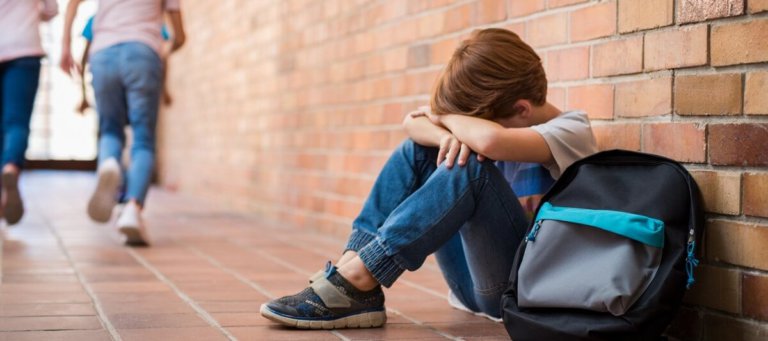
School bullying is stressful for both parent and child. Frustratingly, it’s hard to know what to do when it happens and how to make it stop. There are many articles out there on how to approach schools and teachers, what to do if there’s no resolution and how to support your child when they’re being bullied.
School bullying isn’t a simple good versus evil matter – much more is at play. Here are five notable facts and figures that could offer useful insight to parents dealing with a child who’s being bullied at school:
1. Bullying rates are increasing
In the US, bullying rates increased from 28 percent in 2015/16 to 33 percent of students in the 2017/18 school year, according to a YouthTruth survey. Majority white schools have higher rates of bullying.
Nearly one-quarter (22 percent) of students in the UK said they have been bullied in the past 12 months, with another 22 percent reporting that they had witnessed bullying incidents. Among this group, more than half (51 percent) said it happened at least once a month. More than one-third said it happened at least once a week.
In Australia, school bullying rates are reported to be at “crisis” level, with three in five students (59 percent) reporting that they’ve been bullied. That’s 2.3 million students nationally and one in five of these are bullied on at least a weekly basis, reveals a survey by The Make Bullying History Foundation.
2. Looks matter
The majority of victims point to the way they look as the reason for them getting bullied.
When asked “Why do you think you were bullied or harassed?”, more than two in five students in the US (44 percent) answered that it was due to the way they look. The rest said it was due to their race (17 percent) or sexual orientation (15 percent).
In the UK, more than half of young people (55 percent) between 11 and 16 years-old have been bullied because of their appearance, with two-fifths experiencing this bullying at least once a week, according to a study by YMCA. The most common reason motive for this form of bullying was the victim being overweight (17 percent), followed by their body shape (15 percent), not wearing the latest trends or brands (12 percent) or wearing clothes deemed inappropriate by their peers (six percent).
3. Private vs public schools
Data from the Melbourne Institute found that a higher proportion of parents in New South Wales with children in state schools reported their child was being bullied when compared to private school parents. In the state’s high schools, only 11 percent of parents at private schools reported their child was being bullied. The figure among parents at state schools was double. Another study in the US had similar results.

Bullying happens in all kinds of schools. Parental support is crucial in all cases. Source: Shutterstock
However, psychologist Karyn Healy of the Resilience Triple P program Parenting and the Family Support Centre at the University of Queensland, wrote in The Conversation that this could arise not because of their private/public status, but from state schools accepting more at-risk students.
“Therefore we cannot conclude that an individual child will be less likely to be bullied if they attend a private school…A number of factors impact a child’s risk of being targeted for bullying. These include school management, the child’s social and emotional skills, support from friends and the parenting they receive,” writes Dr Healy.
4. ‘Invisible violence’ and why it matters
Invisible violence refers to the “feeling of violation experienced through culturally accepted behaviours and power imbalances,” according to Ben Arnold Lohmeyer, an adjunct researcher at Flinders University. His interviews with marginalised young people – who have often been victims or perpetrators of school bullying and violence – reveal that they saw violence beyond the physical sense:
“They saw a system that “rewards you for being upper middle class and white and educated”, and which considered people “not really that violent” if they are nice and polite,” Lohmeyer wrote.
While there is no direct link between such experiences leading them to bully, he noted that research has suggested that “this kind of invisible violence legitimises and justifies interpersonal violence”.
“Instead, visible violence and bullying can be thought of as a symptom of invisible violating social inequalities,” Lohmeyer concludes.
5. Not all anti-bullying campaigns work
Anti-bullying initiatives may stem from good intentions, but not all are effective. Some may result in making bullying worse. To know which one would work, there are common traits shared among programmes that do work in reducing bullying, according to a 2010 analysis of many studies. These include a longer implementation time, involving parent meetings, improved playground supervision and firm disciplinary methods.
Parents can check out independent scientific organisations that evaluate evidence for programme effectiveness too, such as Blueprints (US) and the Early Intervention Foundation (UK).
For examples of programmes proven to be effective by randomised controlled trials, Dr Healy suggests the Friendly Schools Programme and Positive Behaviour for Learning.
Liked this? Then you’ll love…
UK: Student social enterprise aims to tackle bullying in schools
Australian PM wants to stamp out bullying in schools, universities







